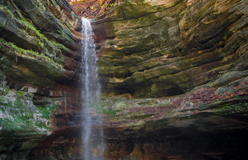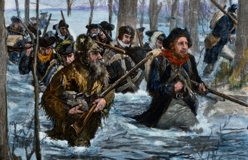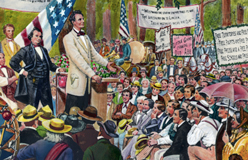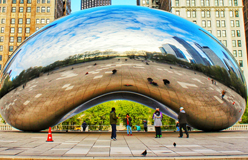It’s hard to imagine 13,000 of anything. The number is just too big.
But according to scientists, that’s how many years ago the first humans reached Illinois. Scientists found evidence in many locations that dates back to that time. Mostly, they found carved spearheads and other tools. These first inhabitants of Illinois and elsewhere in North America are called Clovis. They lived together in small groups. They didn’t stay in one place for long and survived by hunting and gathering plants. It is thought that the Clovis are ancestors of the Indigenous (Native) peoples of Illinois.
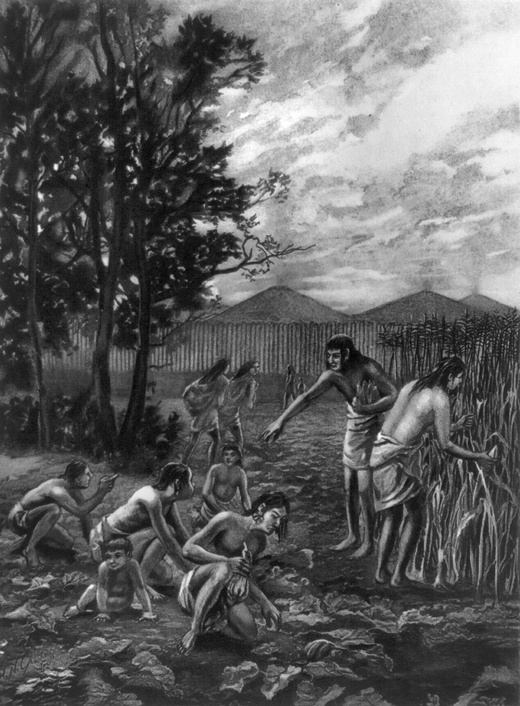
◀ Traveling from eastern North America, the Eastern Woodland peoples were among the first to arrive in our region. They settled along the rivers of the area. Beginning in about 1000 BCE, they built burial mounds. These were hills of rocks and dirt to honor the dead. Later, these peoples developed agriculture and created trade routes. They also developed technology, such as the bow and arrow. These advances enabled the Eastern Woodland tribes to create permanent settlements.
The Eastern Woodland peoples mixed clay and crushed rock to form a material they shaped into bowls and jars. After a bowl or jar was baked in fire, it could hold liquid. It could also be placed directly on a fire to cook food. Some scientists believe that the designs artists carved into a bowl or jar may represent a specific family or group. ▶
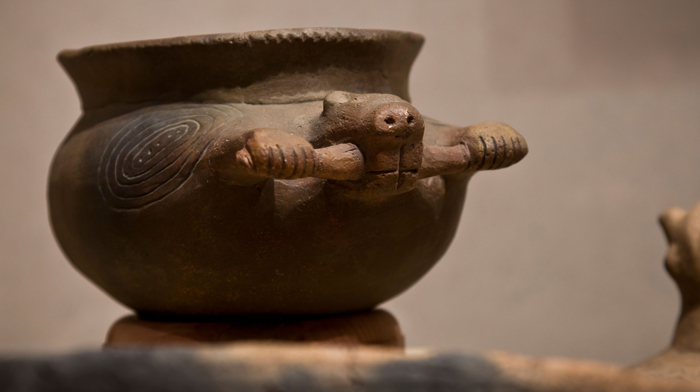
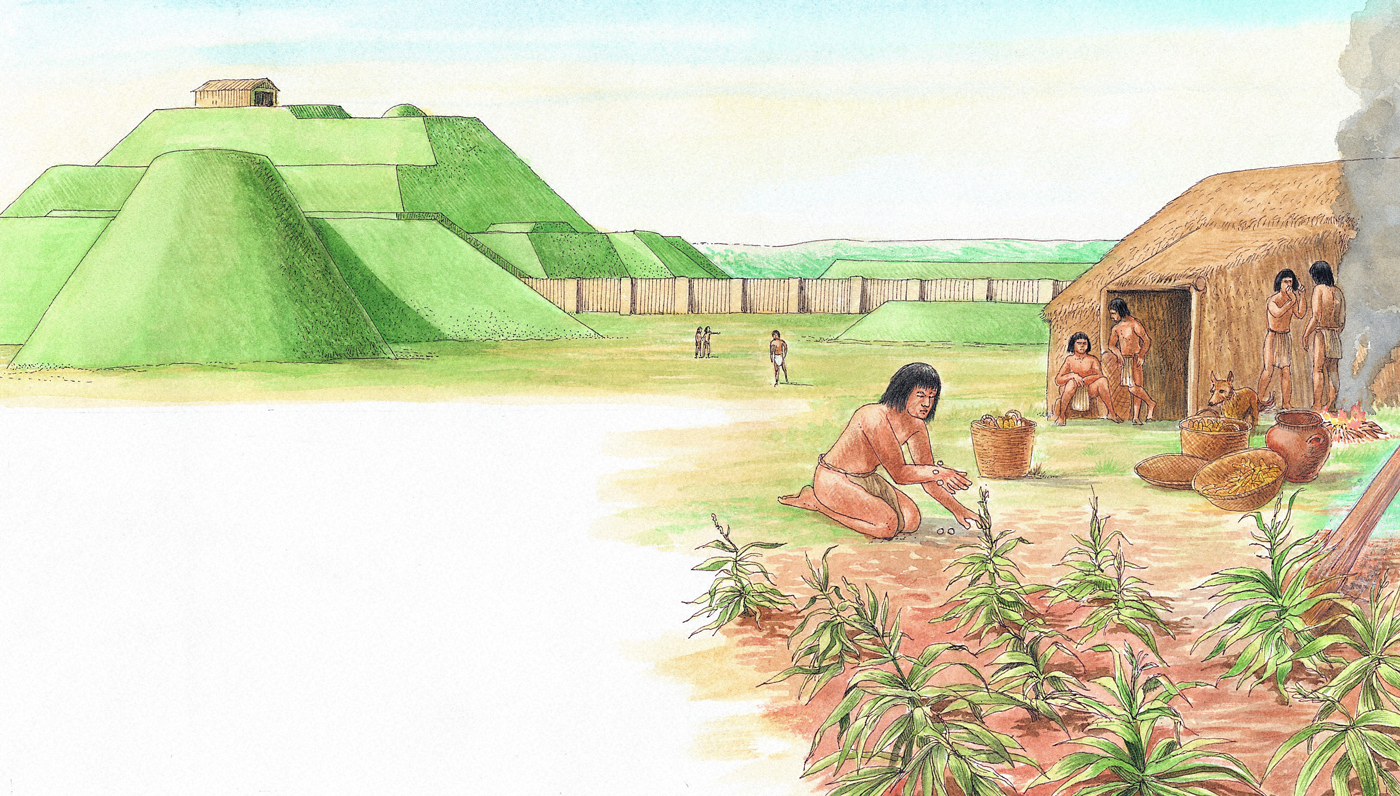
▲ In the center of Cahokia Mounds, the Mississippian peoples built Monks Mound. It is the largest prehistoric structure of earth in the Western Hemisphere. The mound is ten times longer than a football field and seven times wider. It is 100 feet tall. Inside Monks Mound and other Cahokia mounds, archaeologists have found headdresses, pottery, weapons, and sculptures of wood, copper, and clay.
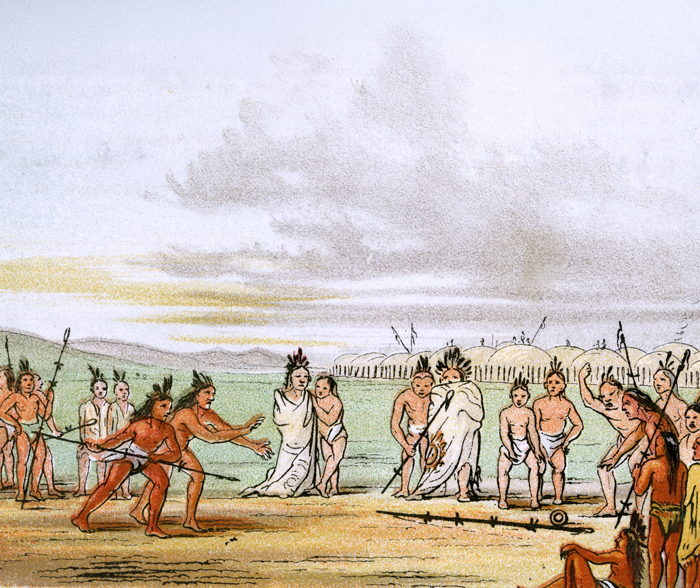
◀ Researchers have found evidence of chunkey, or tchung-kee, a game the Mississippian peoples played. To begin the game, one player rolled a disc-shaped stone along the ground. Other players then had to guess where the stone would stop rolling and throw a spear in that direction. The game was won by the player who landed a spear closest to the stone. Chunkey started in the Cahokia Mounds area but spread throughout much of eastern North America. It was played for fun but was also used to settle disagreements.

▲ The name for our state comes from the Illiniwek (or Illini), Indigenous peoples of the Mississippi River valley. The Illiniwek traveled with the seasons. In spring and summer they lived in large villages along the rivers. Their houses, called longhouses (above), were over 50 feet long and 24 feet wide. Several families lived in a single longhouse. During winter the Illiniwek lived in wigwams. These were small, with only enough space for one or two families. Illiniwek women spun bison hair into yarn, which was used to make cloth for leggings and scarves. Bison are sometimes called buffalo.
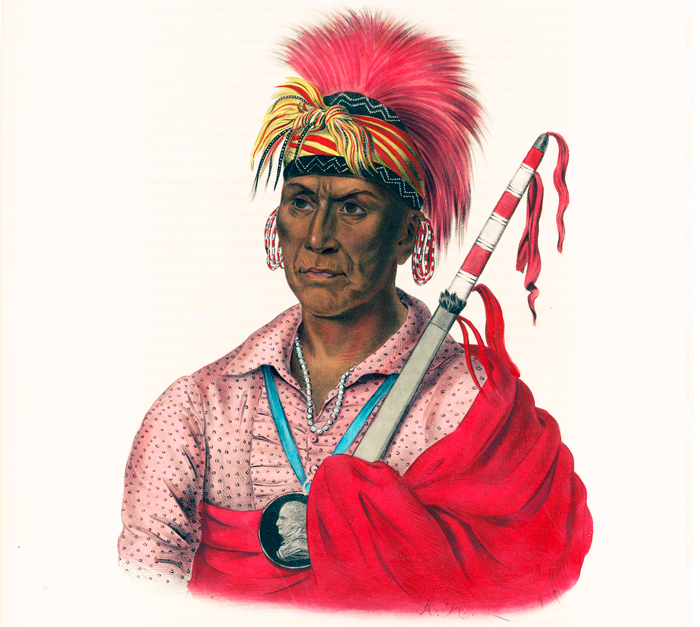
◀ At special times, the Illiniwek took part in a ceremony called the calumet dance. The ceremony involved dancing and the calumet, a sacred pipe. A calumet decorated with red feathers stood for war, while one with white feathers represented peace. The Illiniwek carried the calumet with them when they traveled. It was used to settle disagreements and for prayer and healing. Europeans referred to the calumet as a peace pipe.
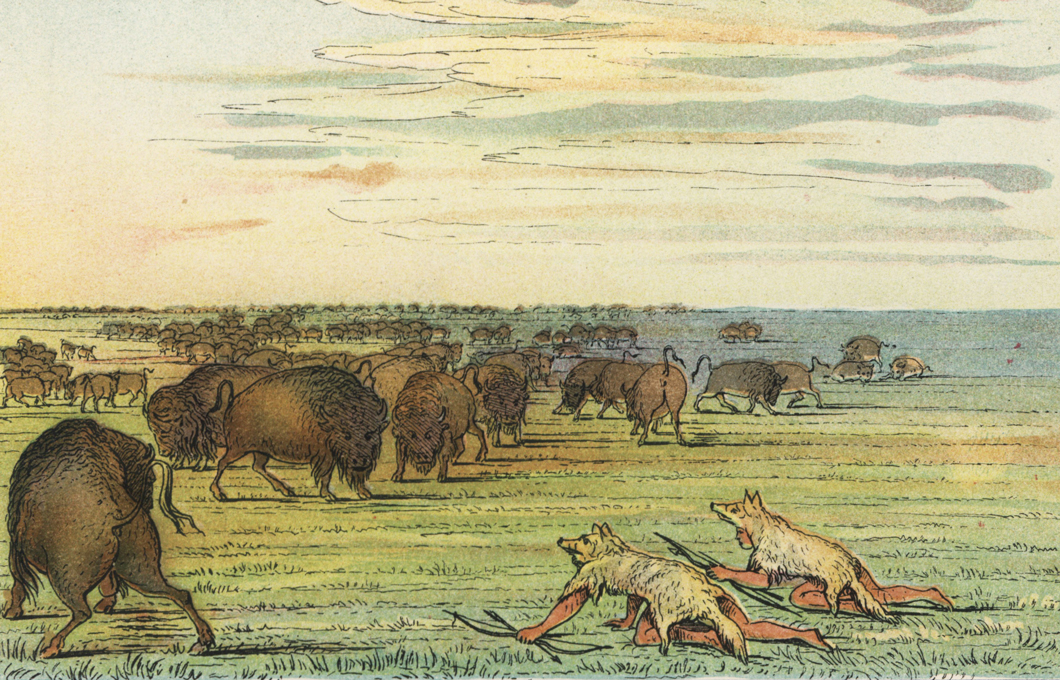
▲ Bison were an important food for the Illiniwek. Often, they would hunt together as a group. The group would break up and surround the bison herd. When one part of the group got close enough, they would shoot arrows and spears. To escape, the bison would end up running toward the other hunters and their death. The Illiniwek dried the bison meat over a fire to preserve it for winter.
Starved Rock is a butte, or tower of rock, in northern Illinois. It is also the center of a legend. As the legend goes, members of different tribes were attending a council, or meeting. During that time, a member of the Illiniwek killed Chief Pontiac of the Ottawa tribe. Battles followed. During one of them, a group of Illiniwek climbed to the top of a butte. Potawatomi allies of the Ottawa surrounded the butte and waited. And waited, and waited, and waited. Without food or water, the Illiniwek eventually starved. And so the name, Starved Rock. ▶
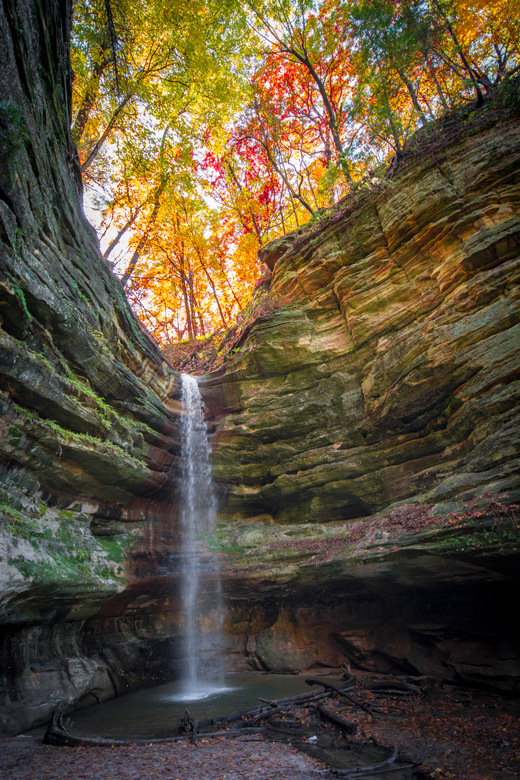
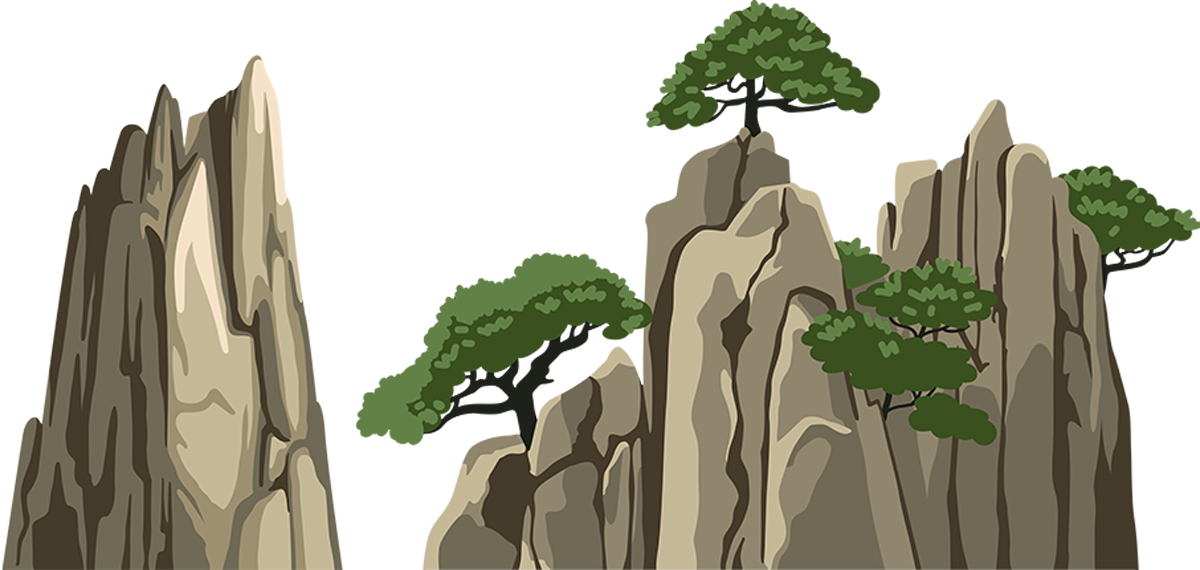
Reflection
Reflect on what happened at Starved Rock. What is your opinion of the Potawatomi strategy? What other solutions might have been possible?

